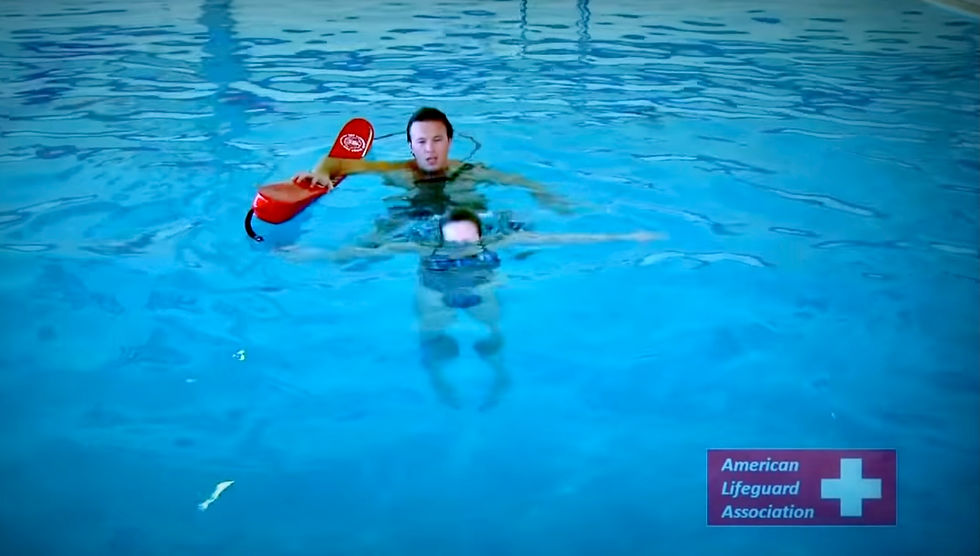Lifeguard Certification: Your Comprehensive Guide
- chrisroot010
- Aug 9, 2024
- 3 min read
Lifeguard certification is a crucial step for anyone looking to work as a lifeguard. Whether you're aiming to keep pools, beaches, or water parks safe, obtaining the proper certification ensures you have the skills and knowledge necessary to respond effectively in emergencies. This guide provides a comprehensive overview of lifeguard certification, including the requirements, training process, and renewal. Partner with American Lifeguard USA to start your journey toward becoming a certified lifeguard.
What is Lifeguard Certification?
Lifeguard certification is an official recognition that an individual has completed the necessary training to perform the duties of a lifeguard. This certification confirms that the person is trained in essential life-saving techniques, including CPR (Cardiopulmonary Resuscitation), AED (Automated External Defibrillator), first aid, and water rescue skills.

Why is Lifeguard Certification Important?
Safety Assurance: Certified lifeguards are trained to handle emergency situations effectively, reducing the risk of drowning and other accidents.
Employment Opportunities: Many employers require lifeguards to have certification to ensure they meet industry standards.
Skill Development: Certification programs provide valuable skills that are crucial for emergency response and effective rescue operations.
How to Obtain Lifeguard Certification
1. Choose a Certification Provider
When seeking lifeguard certification, it's essential to choose a reputable provider. American Lifeguard USA offers comprehensive training programs designed to prepare you for certification exams.
2. Meet the Prerequisites
Before enrolling in a certification course, ensure you meet the basic prerequisites:
Age Requirement: Typically, you must be at least 15 years old.
Swimming Skills: You should be a strong swimmer capable of performing specific strokes and rescue techniques.
Health Conditions: Certain medical conditions may affect your ability to complete the training; consult with a healthcare provider if needed.
3. Enroll in a Lifeguard Training Course
American Lifeguard USA provides various training options, including:
In-Person Classes: Hands-on training with experienced instructors.
Online Modules: Flexible learning that covers theoretical knowledge.
Hybrid Programs: A combination of online and in-person training for comprehensive learning.
4. Complete the Training
The training program includes:
Water Rescue Skills: Techniques for rescuing swimmers in distress.
CPR and AED Training: Life-saving procedures for cardiac emergencies.
First Aid: Basic medical care for injuries and illnesses.
5. Pass the Certification Exam
After completing the training, you must pass a certification exam. This typically involves:
Written Test: Assessing your knowledge of lifeguard protocols and emergency procedures.
Practical Test: Demonstrating your ability to perform rescue techniques and administer CPR.
6. Receive Your Certification
Upon passing the exam, you will receive your lifeguard certification, valid for a specified period (usually 2-3 years). American Lifeguard USA provides certification cards and offers resources for maintaining your skills.
Lifeguard Certification Renewal
Lifeguard certifications are not permanent and require renewal to ensure that skills and knowledge remain up-to-date. Here’s how to renew your certification:
1. Attend a Recertification Course
American Lifeguard USA offers lifeguard recertification courses that cover the latest practices and protocols. These courses are shorter than initial training and focus on refreshing your skills.
2. Complete the Required Hours
Recertification may require a certain number of training hours or practice sessions. Check with your certification provider for specific requirements.
3. Pass the Renewal Exam
Similar to initial certification, you will need to pass a renewal exam to demonstrate that you still meet the standards required for certification.
4. Update Your Certification
Once you pass the renewal exam, your certification will be updated. Ensure you keep track of your certification’s expiration date to avoid lapses in your certification status.
Benefits of Lifeguard Certification
Enhanced Job Prospects: Certification increases your employability and opens up various job opportunities in different aquatic settings.
Increased Confidence: Being certified ensures you are prepared for emergencies, enhancing your confidence in handling real-life situations.
Professional Development: Certification demonstrates your commitment to the safety and well-being of others, reflecting positively on your professional profile.
Conclusion
Lifeguard certification is more than just a credential; it’s a commitment to safety and preparedness. By choosing American Lifeguard USA for your training, you gain access to top-notch resources and expert instructors who will guide you through every step of the certification process. Whether you’re just starting out or looking to renew your certification, American Lifeguard USA is your partner in achieving and maintaining the highest standards of lifeguard readiness.
Also For More Information; The Ultimate Guide to Lifeguard Certification




Comments